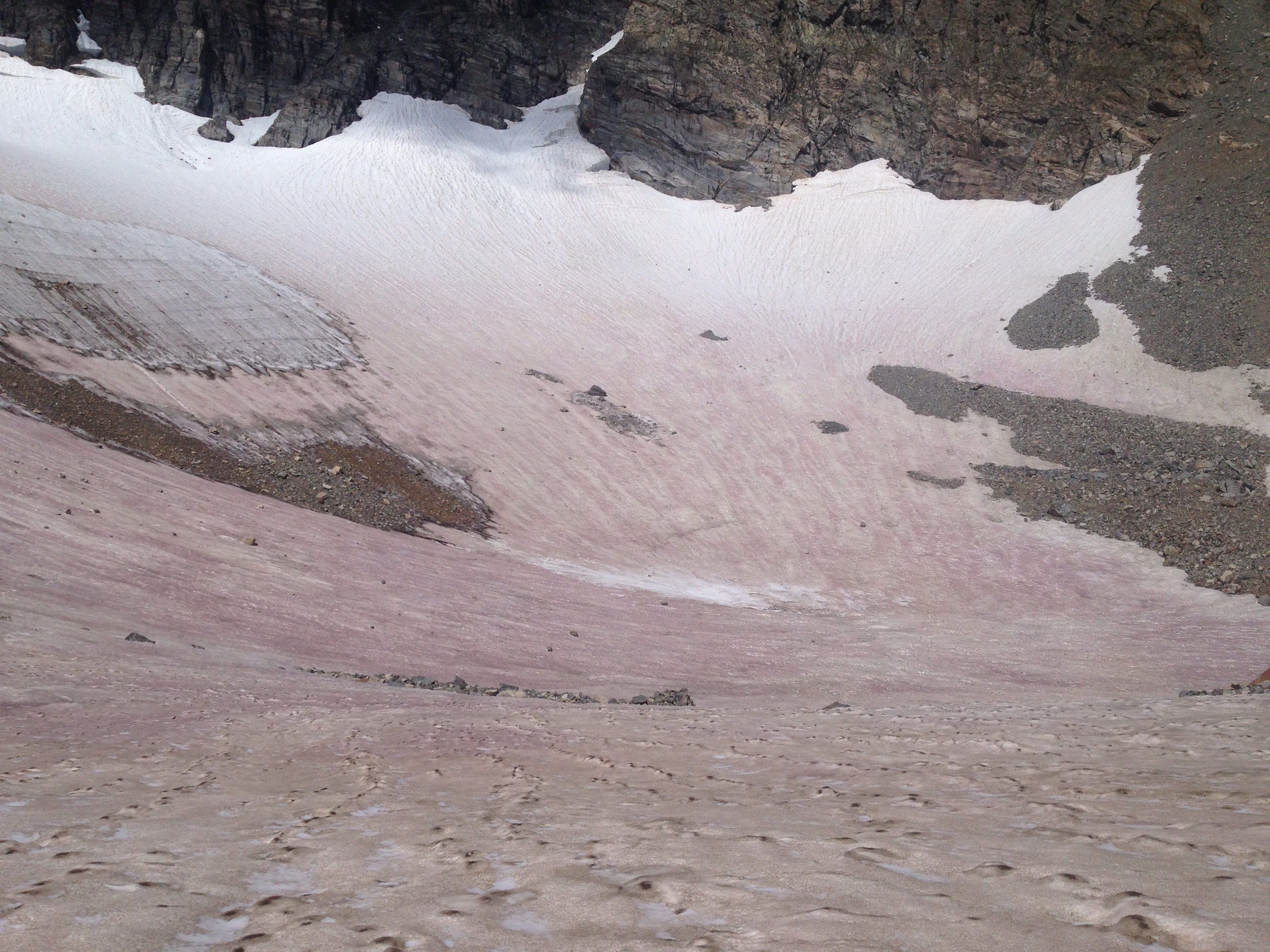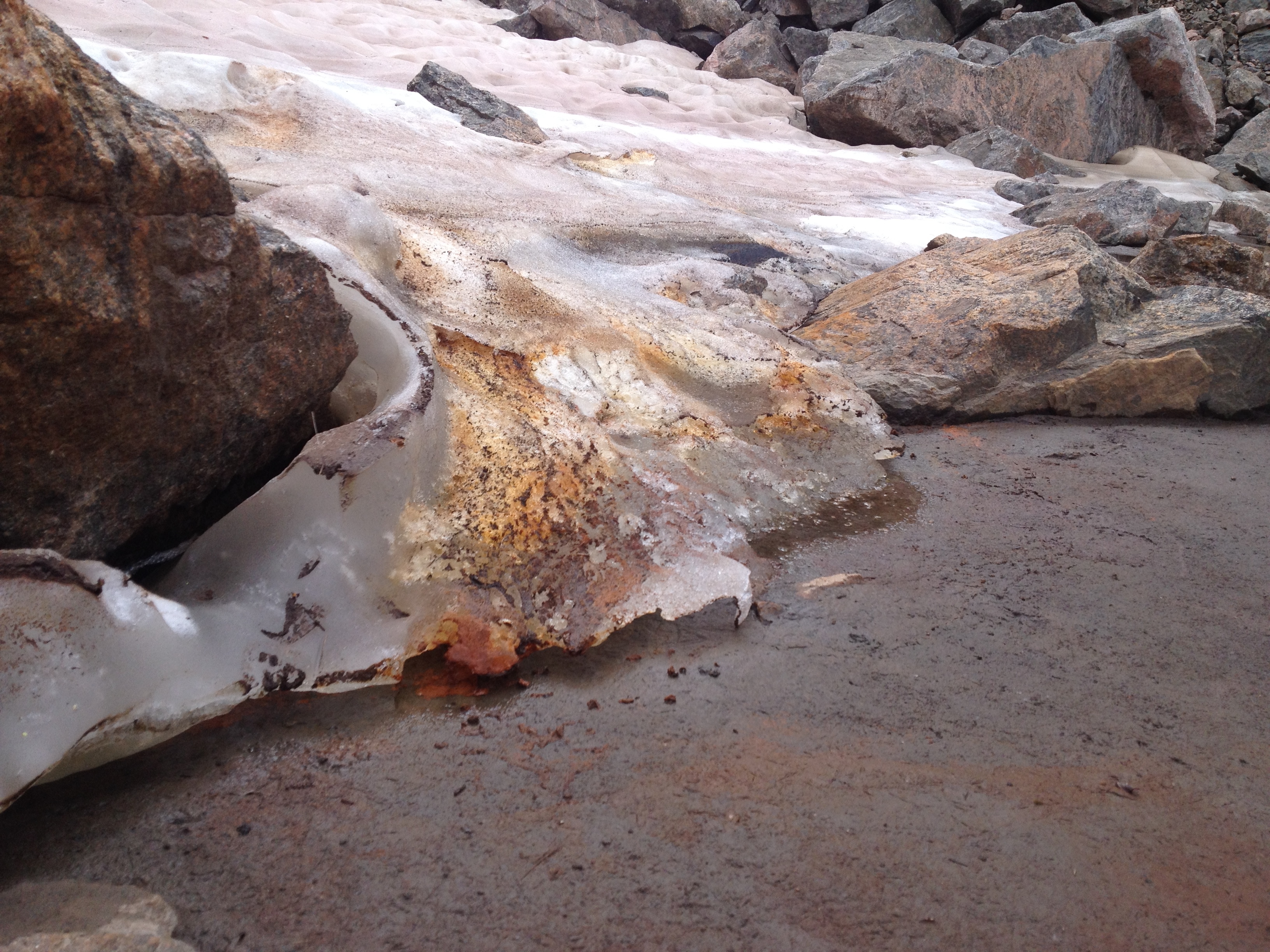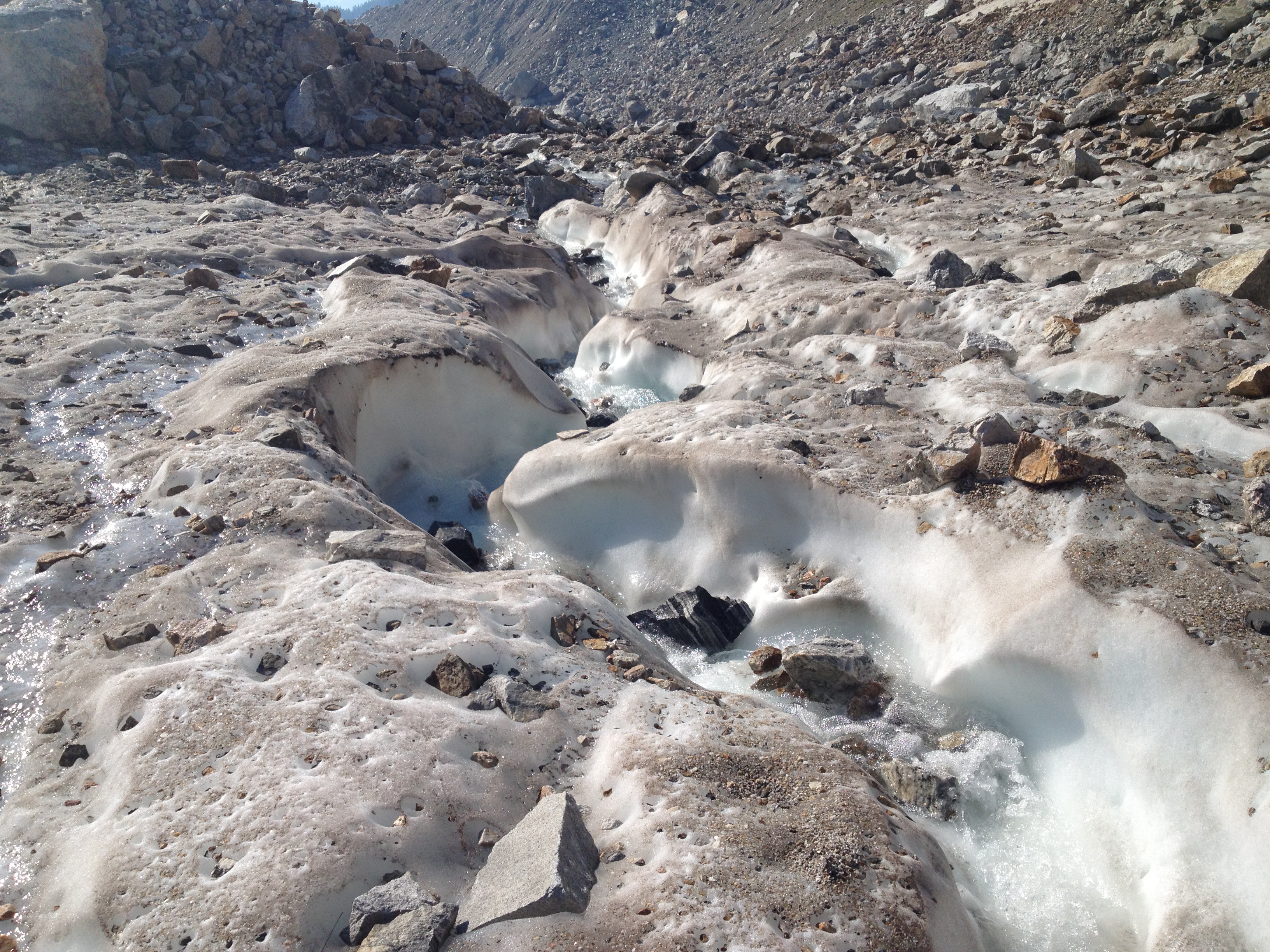
Don’t Eat the Red Snow: the cryosphere is bursting with life.
By Tim Fegel
Once thought to be abiotic environments with insignificant fluxes of carbon and nutrients, recent studies are finding that glacial and other periglacial features are teeming with life and serve as important input sources for carbon, nutrients, and metals to the adjacent alpine ecosystem. For my master’s research, I am examining how microbial community structure, nutrient availability, and carbon compound signatures vary between different types of glacial features. Data analysis is in its infancy for the project so I will share a few photos to help describe the research, because, as they say, a picture is worth a thousand words (or datapoints).
 Above, Chlamydomonas nivalis, a green algae, is prosperously living on the surface of the St. Vrain Glaciers, CO, in August 2014. The algae use their red pigment (secondary to chlorophyll) to decrease their local albedo and make liquid water available to the cell. As alpine ecosystems continue to have increasing late summer temperatures, we expect to see greater abundances of this cold-loving algal species benefiting from melting glacial ice.
Above, Chlamydomonas nivalis, a green algae, is prosperously living on the surface of the St. Vrain Glaciers, CO, in August 2014. The algae use their red pigment (secondary to chlorophyll) to decrease their local albedo and make liquid water available to the cell. As alpine ecosystems continue to have increasing late summer temperatures, we expect to see greater abundances of this cold-loving algal species benefiting from melting glacial ice.
 In this second photo we see a yet-to-be-identified microbial community living at the edge of a rock glacier in the Gore Range, Silverthorne, CO. Rock glaciers are known to have higher metal concentrations in their meltwaters and the rusty bugs in this photo are likely chemolithoautotrophs living off of energy created with the oxidation of metals.
In this second photo we see a yet-to-be-identified microbial community living at the edge of a rock glacier in the Gore Range, Silverthorne, CO. Rock glaciers are known to have higher metal concentrations in their meltwaters and the rusty bugs in this photo are likely chemolithoautotrophs living off of energy created with the oxidation of metals.
 This final image shows a 1.5-meter deep channel cut through the Teton Glacier, Grand Teton National Park. The rock-water interactions occurring within the channel are driven by increased insolation (the amount of incoming solar radiation) and ambient air temperatures in the late-summer. This change in surficial hydrology will drive the physical and chemical dissolution of Al, Fe, and Mg containing minerals in the rocks once trapped in the frozen ice and surrounding bedrock.
This final image shows a 1.5-meter deep channel cut through the Teton Glacier, Grand Teton National Park. The rock-water interactions occurring within the channel are driven by increased insolation (the amount of incoming solar radiation) and ambient air temperatures in the late-summer. This change in surficial hydrology will drive the physical and chemical dissolution of Al, Fe, and Mg containing minerals in the rocks once trapped in the frozen ice and surrounding bedrock.
Timothy Fegel is a M.S. student working with Dr. Jill Baron, completing his research in conjunction with the Western Mountain Initiative (WMI). He is working desperately to convince other graduate students in the department that glaciers are just as cool as soils.